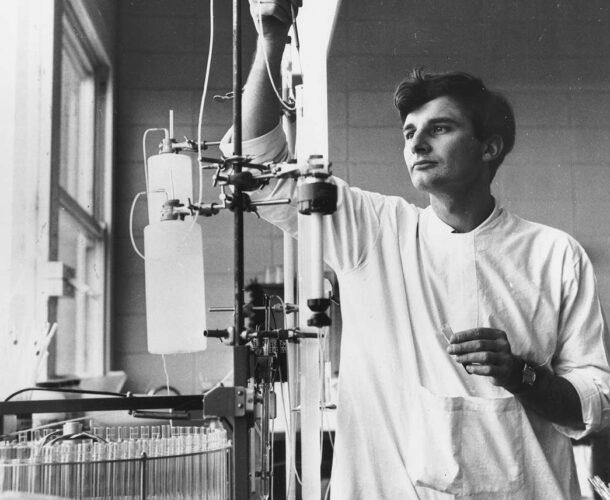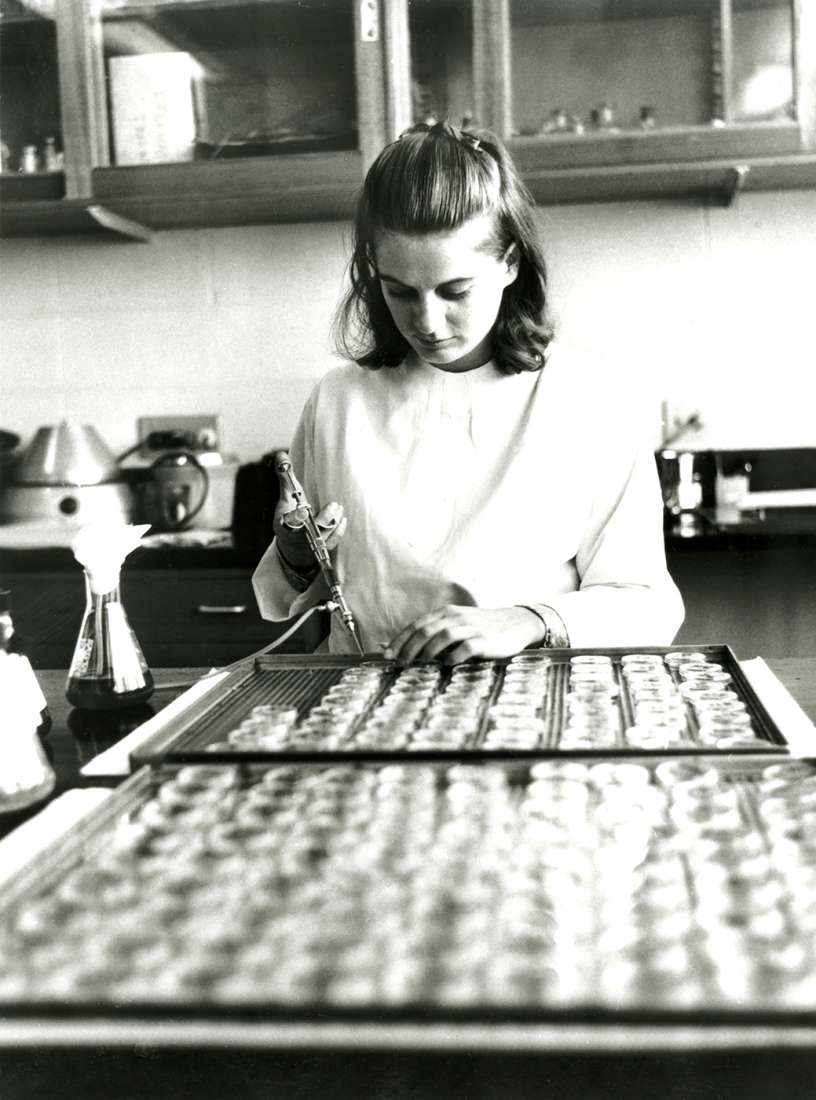Following the discovery that ‘factors’ could stimulate bone marrow cells to produce colonies of white blood cells, Don Metcalf begins to look more closely at where and how these signals act.
Unlike classic hormones, which are produced by a single tissue or cell type and act widely, Metcalf and his team find CSFs are produced by almost every tissue examined, but in vanishingly small amounts, and acting on a limited set of target cells.
“[We] went around testing all the different tissues in the body to see which ones had activity. Turned out they all did, because these hormones are made all over the body,” Metcalf says.
A skeptical reception
The scientific community is skeptical. It is suggested that CSFs are ‘artifacts’ (contamination of the experiment) and of little importance to the regulation of blood cell production in vivo.
Skepticism was the spur that Metcalf relished.
Over a period of three years, the research team went to work accumulating indirect evidence that their idea was correct, studying patients with infections to see if they could find higher levels of CSFs when more white blood cells were being produced.
The answer was yes.
“That sort of indirect evidence said, ‘Yep, you’re on the right track,’ what you’re picking up, what you’re calling colony stimulating factors, does seem to make sense as a regulator of those protective white cells,” Metcalf says.










